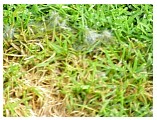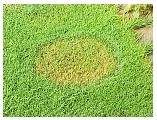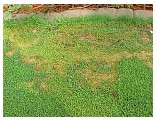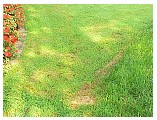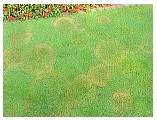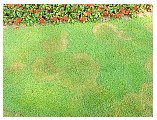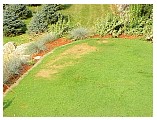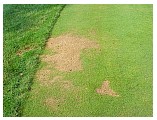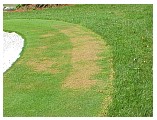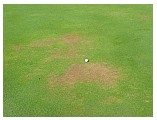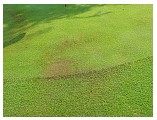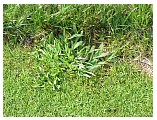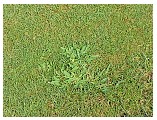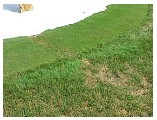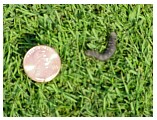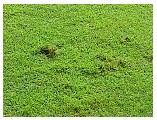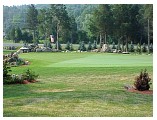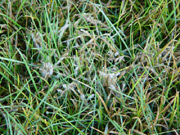
|
Pythium Blight This photo was taken around July 21, 2003. It has been a particularly bad season for fungus. The disease spreads very fast in the warm, humid conditions. Mycelium is obvious in these images. Keep clicking on the pictures to zoom in. For more on the subject see: "Pythium Blight", Richard L. Duble, Turfgrass Specialist, Texas Agricultural Extension Service |
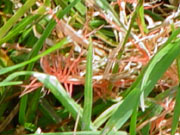
|
Red Thread A unique disease that attacks the grass blades and causes a reddish orange color. Besides the grass, it coats and discolors equipment and shoes. It is most prevalent in hot and dry conditions. Click on the pictures to zoom in closer. |
